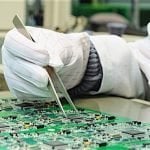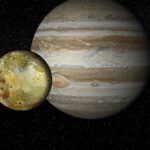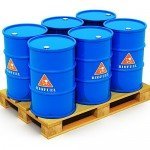Fifty years after man last set foot on the moon, in 1972’s Apollo 17 mission, NASA is gearing up to do it again. In collaboration with several commercial and international partners, the Artemis missions are expected to see humans return to the moon by 2025. This time, it looks like we’re planning to stay.
This ambitious goal is part of NASA’s larger strategy to use the moon as a springboard for further exploration of our solar system, including a crewed mission to Mars in the 2030s.
To make this happen, NASA is currently developing new technologies and hardware and working on ways to reduce the cost of spaceflight.
What exactly are the Artemis missions, and how will they get us back to the moon? When does it all happen? What are the challenges?
We’ve put together an “everything you need to know” guide for those who are interested.
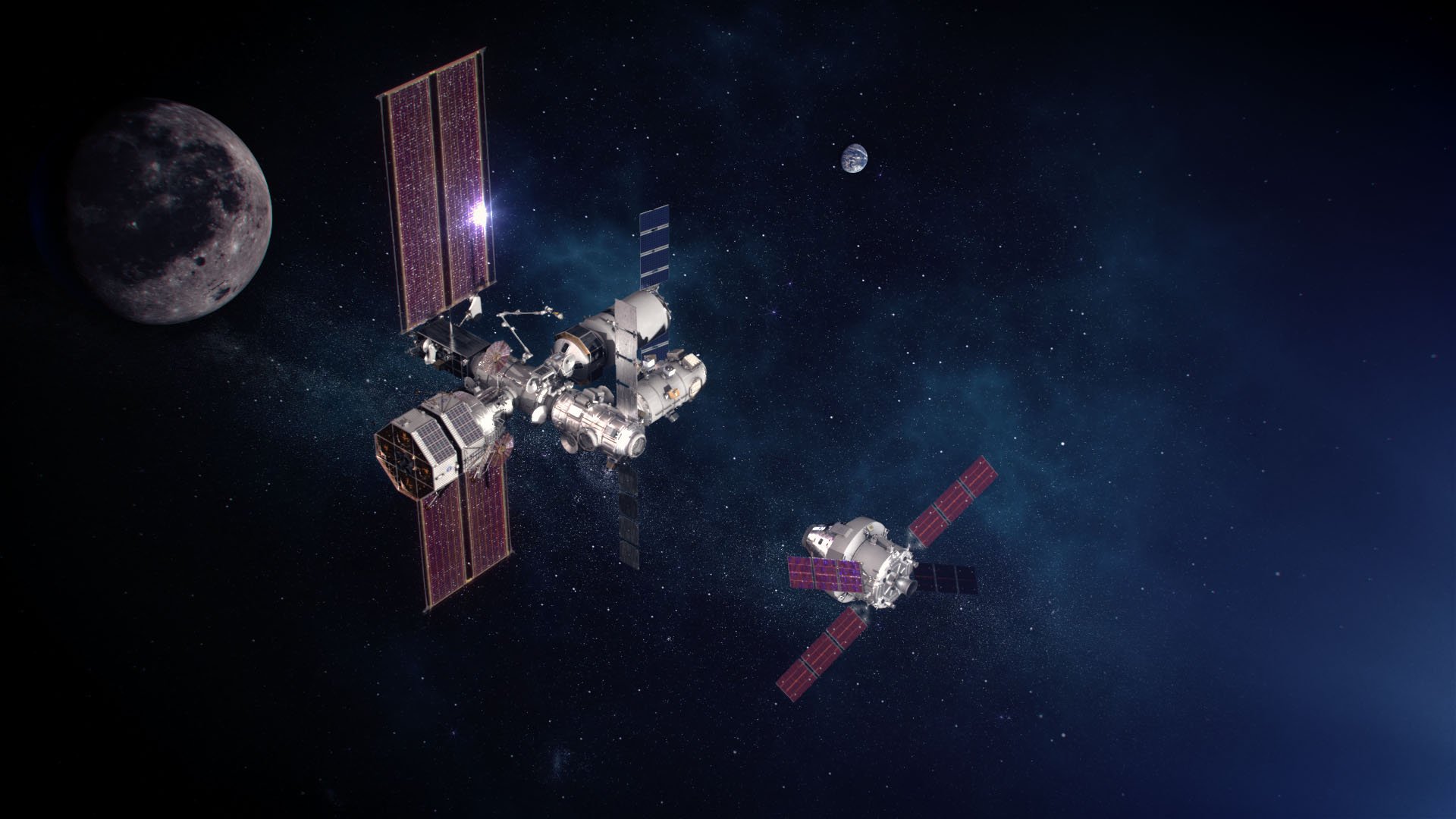
What are the 3 Artemis missions planned so far?
The Artemis missions are a series of spaceflight missions that NASA is currently planning.
Unlike the original Apollo missions, the Artemis missions will be a global effort, not just a US endeavor, combining the knowledge and experience of the different international space agencies with commercial partners that bring their own capabilities to the table.
There are three Artemis missions planned so far. [1]
- Artemis 1. Planned for 2022, this mission will be an uncrewed test of the Space Launch System (SLS) rocket and Orion spacecraft. The SLS is a new super heavy-lift launch vehicle that NASA is developing. Artemis 1 will be the first time they use the SLS, and it will also be the first time that Orion has flown beyond low Earth orbit.
- Artemis 2. Planned for 2024, this will be the first crewed mission of the Artemis program. Like Artemis 1, it will also use the SLS rocket and Orion spacecraft.
The crew for this mission will consist of 4 astronauts who will spend at least eight days in space, orbiting the moon. - Artemis 3. Planned for 2025, this mission will be the first to land humans on the moon since 1972. The crew for Artemis 3 will consist of four astronauts who are yet unnamed.
With this mission, NASA aims to place the first woman and the first person of color on the moon. They will spend nearly a week on the lunar surface, twice as long as the original Apollo astronauts did.
The technology behind the launch
A lot of new technology is under development by the many Artemis partners to make the missions possible.
Here’s a look at some of the key components of the mission. [2]
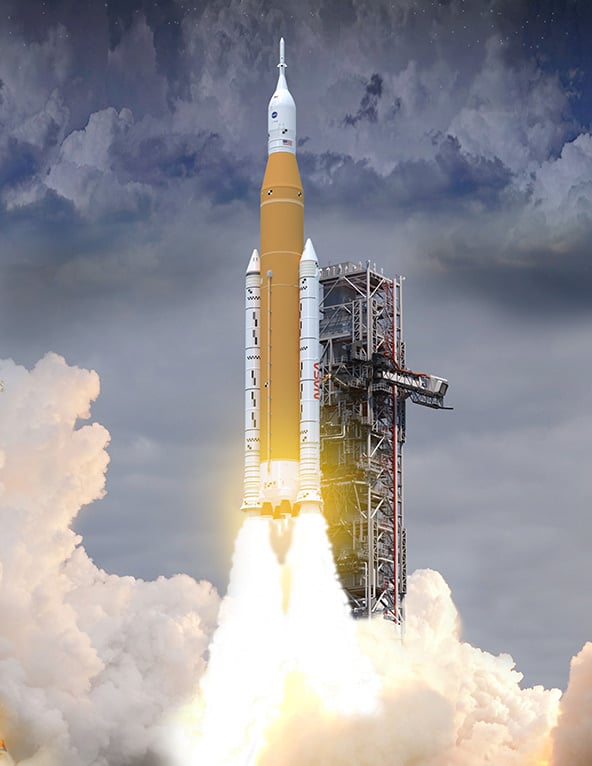
The Space Launch System (SLS)
The SLS is a super heavy-lift launch vehicle that NASA is developing. It will be the most powerful rocket ever built, capable of carrying more payload into deep space than any other rocket. The design of the SLS is adaptable, so it can be used for a variety of missions, including sending astronauts to the Moon, Mars, and beyond.
Built by a team of contractors led by Boeing, the design of the SLS is based on NASA’s Space Shuttle and Apollo programs, which means that it benefits from decades of experience and knowledge.
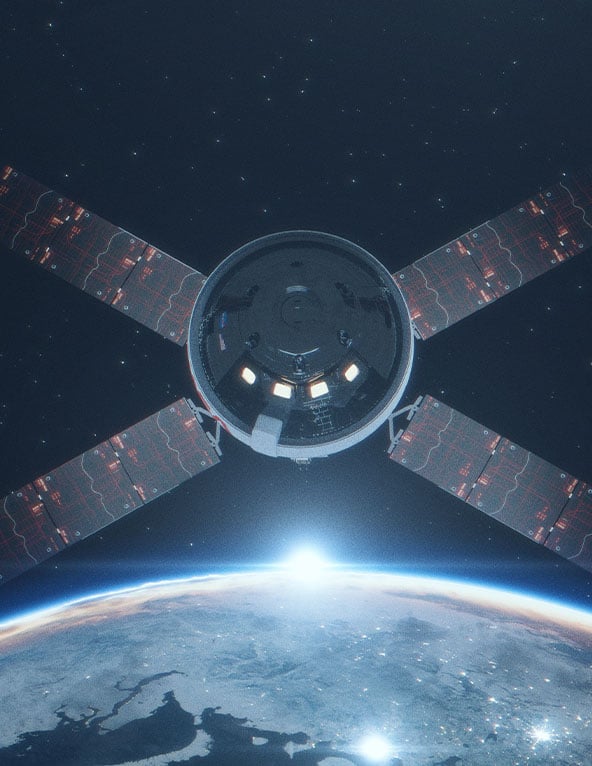
The Orion spacecraft
The Orion spacecraft is being developed as a new multi-purpose vehicle for crewed and uncrewed missions. It is designed to be safe, flexible, and capable of carrying humans farther into the solar system than ever before.
Orion will be launched on the SLS rocket and will be capable of carrying a crew of up to four astronauts on missions to the Moon, Mars, and beyond.
Built by the experts at Lockheed Martin, Orion is the next generation of spacecraft that will take humans farther into the solar system than we have ever gone before. It is designed to be capable of sustaining them for long periods of time and providing a safe return home.
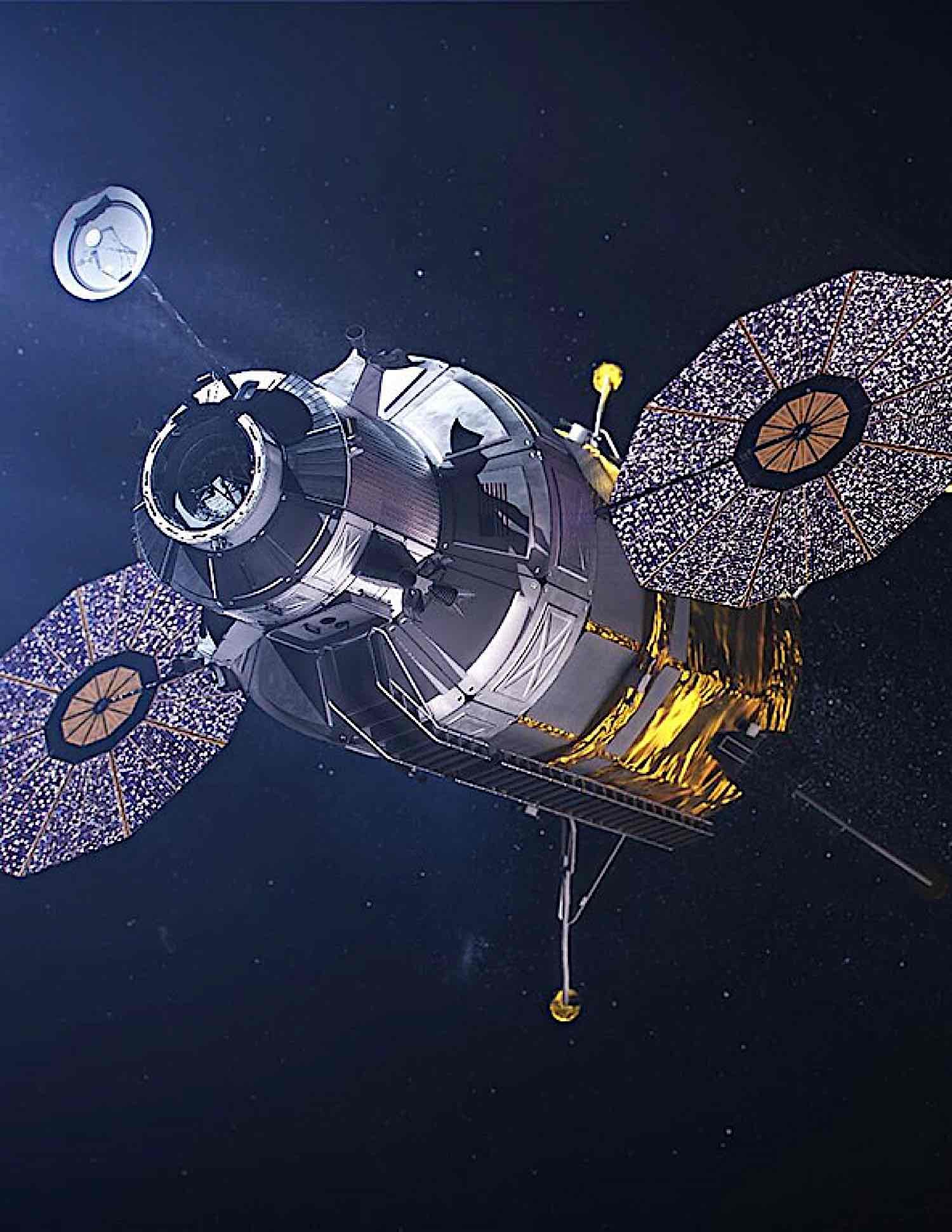
The Human Landing System (HLS)
The HLS is a key component of the Artemis program, enabling humans to land safely on the moon. NASA has been working with private companies to develop prototypes of the HLS, which will be tested in the coming years, and SpaceX’s Starship vehicle has been selected for Artemis 3.
The HLS will carry astronauts from Orion down to the lunar surface so that they can explore and conduct scientific experiments.
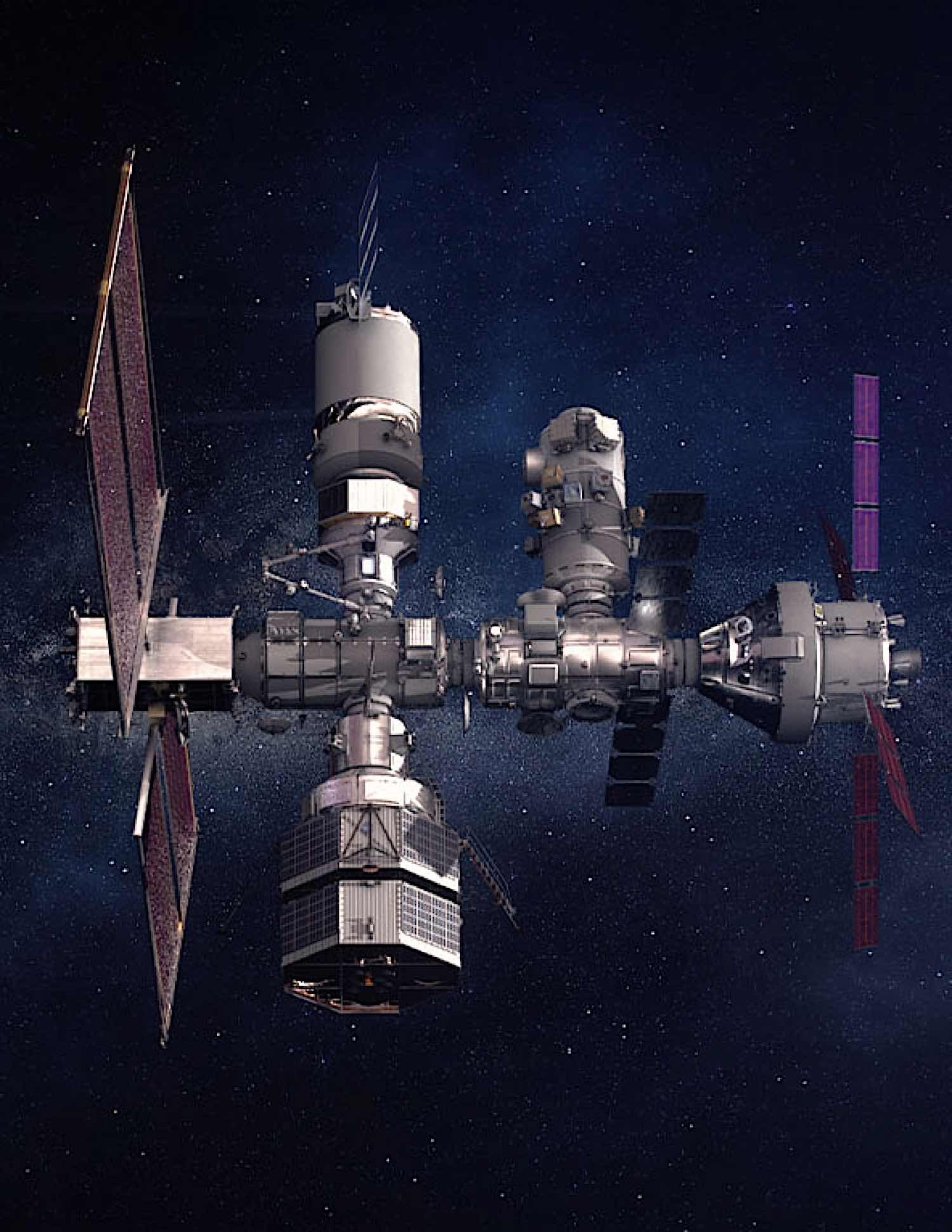
The Lunar Gateway
The Lunar Gateway is a small space station that will be built in orbit around the moon. It will serve as a base of operations for astronauts as they travel to and from the lunar surface, and it will also be used as a platform for science and technology demonstrations.
The Lunar Gateway will require a series of space missions to assemble the pieces in orbit to form the complete station. It will be composed of several modules, including a Power and Propulsion Element (PPE) that Maxar Technologies will build and a Habitation and Logistics Outpost (HALO), whose original design was carried out by Northrop Grumman.
The PPE will provide power and propulsion for the Gateway, allowing for communications, orbital transfer capabilities, and altitude control, while the HALO will be the living quarters for the Gateway astronauts.
As well as providing docking stations for visiting spacecraft, the HALO will have space to conduct experiments, store supplies, and house the crew during their stay, allowing for exercise and rest.
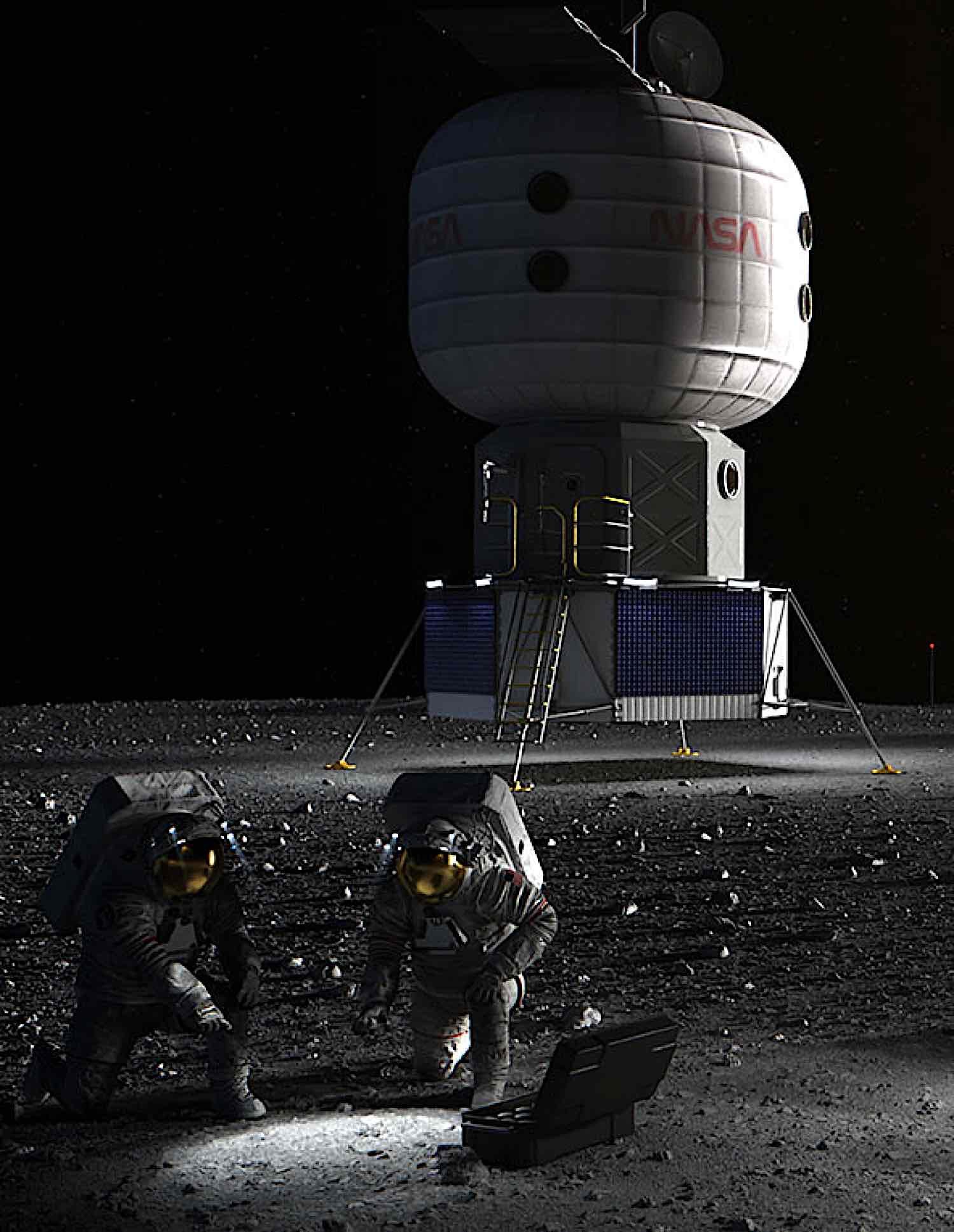
Artemis Base Camp
Artemis Base Camp is a concept for a human outpost on the moon that would serve as a base of operations for astronauts exploring the lunar surface. It would be located at the moon’s south pole, where permanently shadowed craters house ice and minerals.
The Base Camp would have all the necessary amenities for a long-term stay on the moon, including habitat for the astronauts, a laboratory for conducting experiments, and a workshop for repairing and maintaining equipment.
Once up and running, it would have the capacity to house up to four astronauts on a month-long stay.
The Exploration Ground Systems (EGS). The EGS is responsible for launching Artemis missions from NASA’s Kennedy Space Center in Florida. The team at EGS is working on upgrading the existing infrastructure at Kennedy to support the combination of both commercial and government launches in the future.
This will make future launches more cost-effective by reducing the need for duplicate facilities and ground crews.
These are just some of the key components that are under development to make the Artemis missions possible, thanks to the collaboration of NASA and its partners.
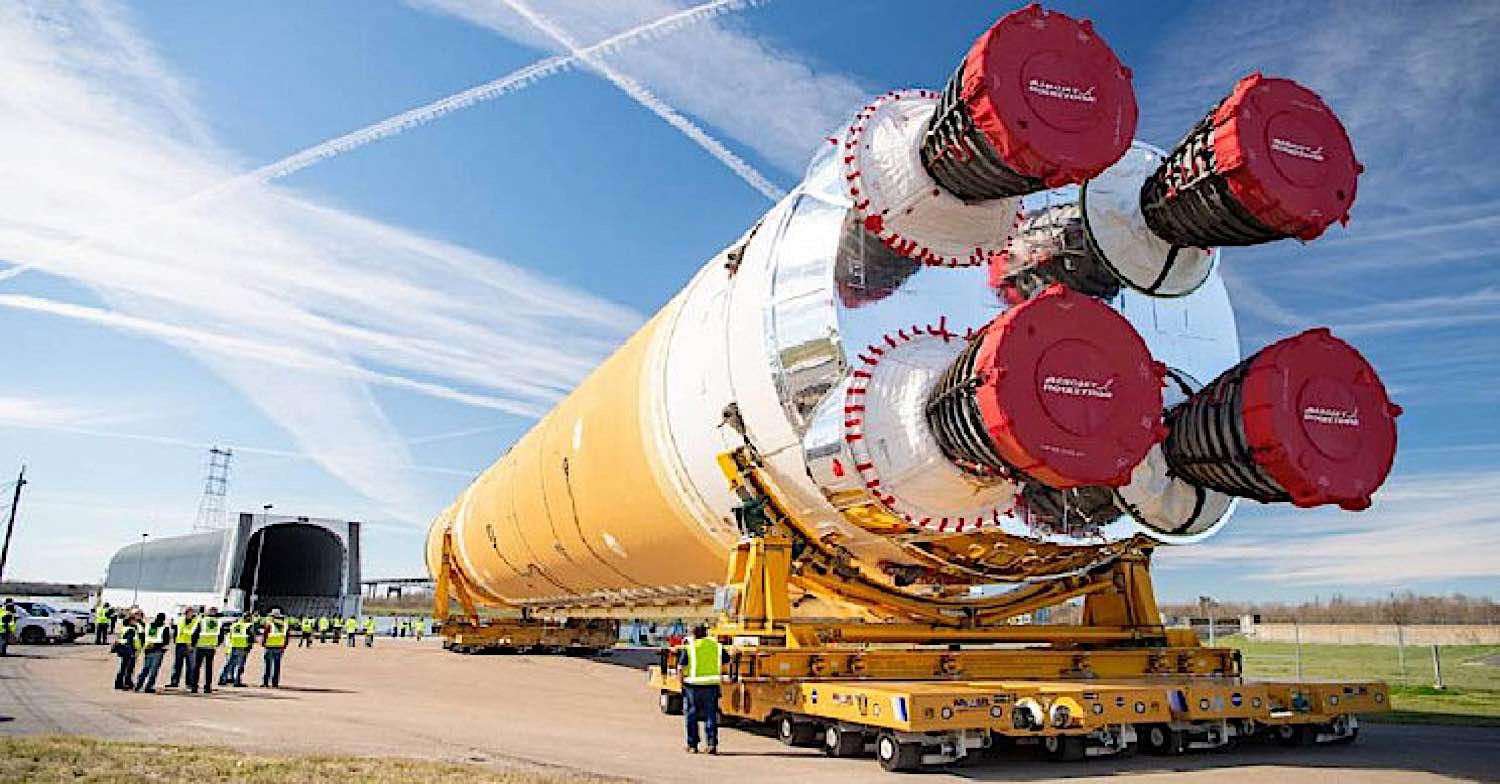
The Artemis 1 mission
The first Artemis mission to test the new Space Launch System (SLS) rocket and Orion spacecraft is being prepared for launch in late 2022. The uncrewed mission will send Orion around the moon and back, testing all of the systems that are required for human spaceflight.
The mission is designed to ensure that the later manned missions will be able to safely perform the critical maneuvers of entry, descent, splashdown, and recovery.
As well as this primary objective, Artemis 1 will also launch ten smaller satellites that will perform their own investigations for research purposes.
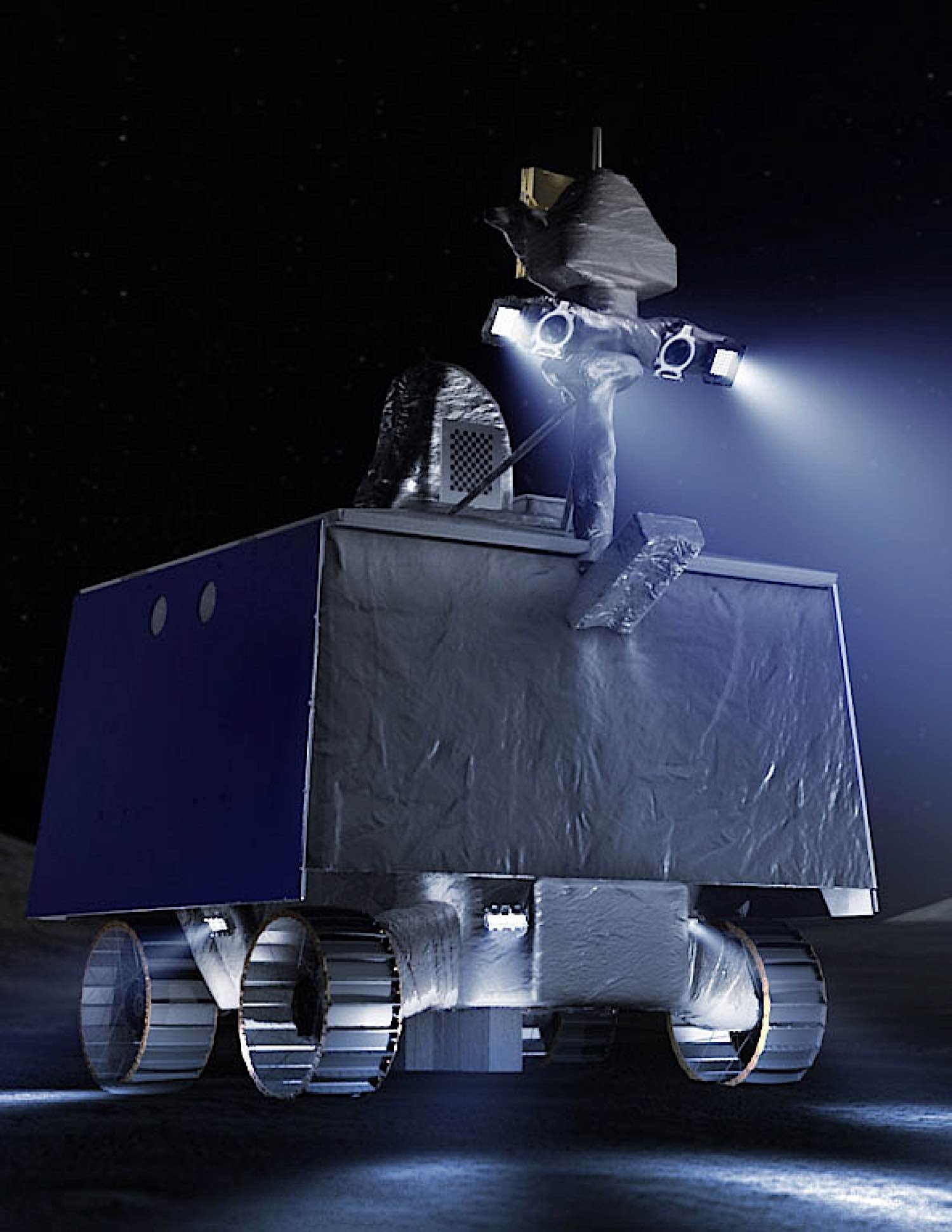
The Artemis Accords
In May 2020, NASA Administrator Jim Bridenstine announced the Artemis Accords, a set of principles guiding future international partnerships in human space exploration, to be signed as agreements between the USA and partner nations. The Artemis Accords are based on the 1967 Outer Space Treaty, which governs the activities of nations in space and establishes the basic legal framework for international cooperation in space.
The Artemis Accords build on this existing foundation and add new principles designed to ensure the safety of astronauts and enable sustainable solar system exploration. [4]
The Accords are also intended to create a level playing field for commercial entities that are looking to participate in space exploration.
The first group of nations signed the Artemis Accords in a live-streamed ceremony on the 13th of October, 2020. The first countries to sign included the United States, Australia, Canada, Japan, Italy, the UK, Luxembourg, and the United Arab Emirates, although the total number of signatories is now up to 21 countries and 1 territory.
These principles are designed both to govern the collaboration of different countries on the Artemis missions themselves and also to set a precedent for future international cooperation in space exploration.
The provisions of the Artemis Accords
- Peaceful Exploration: Under the Artemis Accords, no exploration activities may be conducted for violent ends.
- Transparency: All countries signing the Accords commit to ensuring transparency in their communication and data sharing with other partners to avoid conflicts and misunderstandings.
Interoperability: Participating nations will work to support interoperable systems to improve safety and sustainability. - Emergency Assistance: All parties agree to respond to any emergency situations that may arise and assist any mission personnel in need.
- Registration of Space Objects: All nations participating in the Artemis missions must sign the Accords.
- Release of Scientific Data: With the Artemis Accords, nations who sign them will guarantee that they will share any new scientific information gained from the journey to space with the rest of the world.
- Preserving Heritage: Signatories of the Artemis Accords pledge to protect outer space heritage, important to culture and history.
- Space Resources: All signatories agree to conduct any extraction or use of space resources needed for safe and sustainable exploration in accordance with the Outer Space Treaty.
- Deconfliction of Activities: The countries agree to take measures to prevent harmful interference with activities in outer space. They also support the principle of due regard for the safety of everyone’s space exploration activities, as outlined by the Outer Space Treaty.
- Orbital Debris: The Artemis Accords nations agree to plan how to dispose of debris safely.
It is expected that the number of nations signing the Artemis Accords will continue to grow as plans for international collaboration continue.
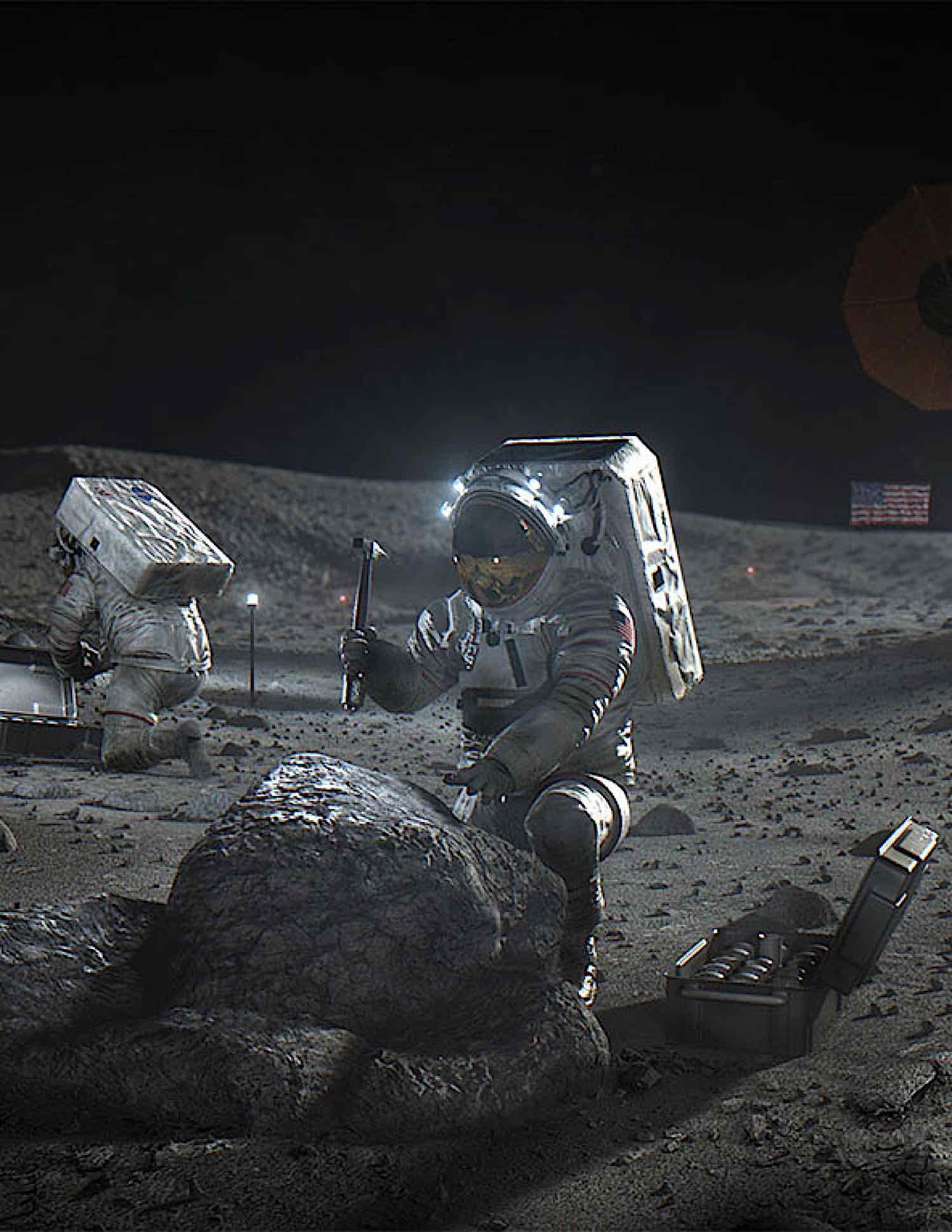
The Artemis Research
The Artemis program is not only about going back to the moon. It is also about using what we learn there to prepare for a journey to Mars and beyond.
After all, if we ever hope to establish a sustainable human presence in space, we need to learn how to live and work in an environment that is very different from our own. The Artemis program will allow us to do just that. Through the Artemis missions, we will gain a better understanding of the moon’s environment and its potential resources.
Here are some of the specific research goals of the Artemis program.
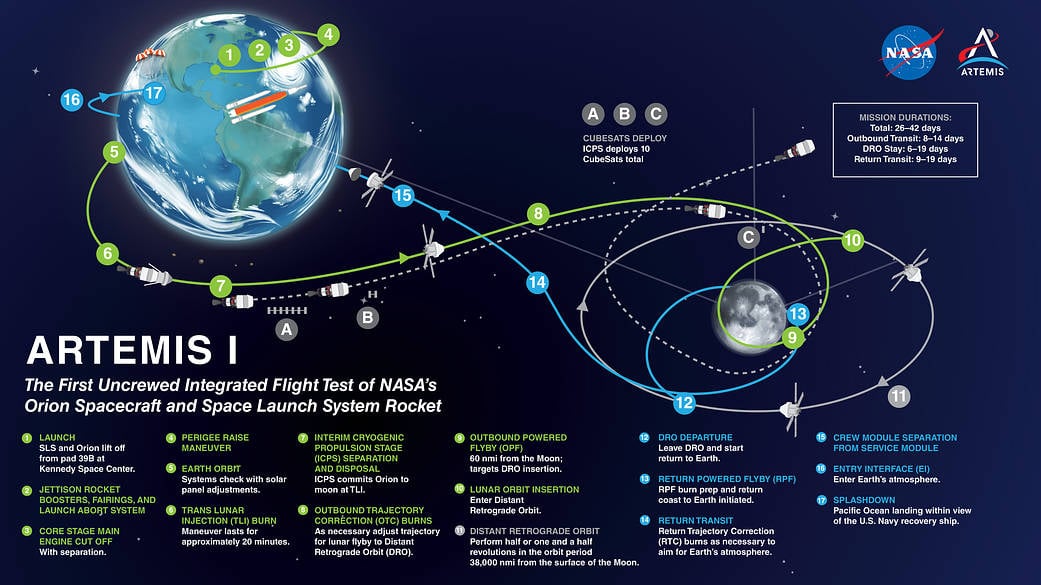
Moonikins to test the new SLS
The Artemis I mission plays a vital role in future space exploration by testing the new Space Launch System (SLS) rocket and Orion spacecraft in an uncrewed flight around the moon. This unmanned mission plans to test whether the conditions inside the rocket are safe for humans through the use of mannequins — or Moonikins if you want to cute. [5]
The three human-like mannequins have been designed to test different aspects of what it would be like to fly on the SLS and how it would affect the human body so that NASA can be sure it would be safe for future astronauts.
Leading the Artemis I mission is mannequin Commander Moonikin Campos, sporting the Orion Crew Survival System spacesuit. Equipped with sensors to measure acceleration, radiation, and the levels of vibration he is exposed to, Commander Moonikin will send NASA valuable data about what it is like to experience the SLS ride.
In case you were wondering “Why the moon?” here’s NASA own answer:
And as the Artemis 3 mission will carry the first women to land on the moon, two female mannequins will be deployed in this initial launch. The mannequins will help scientists understand if there are any differences in how the female body responds to the journey, especially when it comes to radiation to the delicate tissues of the breast and ovaries that tend to be susceptible to cancer.
These mannequins, named Zohar and Helga, are made with insides that simulate human organs, soft tissue, and bones, so any effects in their tissues can be monitored during the flight. Each will be equipped with 5,600 sensors to record the impact of radiation on several parts of the body, including the uterus, bone marrow, lungs, and stomach.
The main difference between these two mannequins is that Helga will be measuring the effects of radiation on the female body as it is, while Zohar’s sensors will be covered by a protective vest to understand how effective the shielding is.
This data will be essential to know how to best protect future female astronauts from the harmful effects of radiation and whether there are any differences between men and women in how they are affected by spaceflight.
Cubesat experiments
The Artemis 1 rockets will also deploy CubeSats, or shoebox-sized satellites, which contain materials for scientific investigations. They will be launched from the Interim Cryogenic Propulsion Stage (ICPS), the upper stage of the Artemis SLS. The ICPS will deploy the CubeSats at three different locations between Earth and the moon.
One of these CubeSats, the Near-Earth Asteroid Scout, will photograph a near-Earth asteroid called 2020GE using an 86-square meter solar sail as propulsion to reach it. It will perform a fly-by of the asteroid, taking high-resolution images while testing a new camera and new ways of sending compressed data from the deep-space missions back to Earth.
Another contains yeast to measure how space radiation affects living cells and yeast’s genetic material.
Two other CubeSats, LunaH-Map and Lunar IceCube, will map the distribution of water across the moon’s surface and search for any ice deposits that may be hidden beneath the surface.
Water on the moon?
NASA has always been interested in the possibility of water on the moon, as it would be a valuable resource for any future manned missions to the lunar surface and give valuable insights into the formation of our solar system.
Previous satellites have already found evidence of water on the moon, in the shadowy craters of the polar regions, which is why the Artemis 3 mission aims to land its crew there. However, it is not yet known how widespread these deposits are or how easy they would be to access.
The data from these two CubeSats will help answer these questions and could pave the way for future manned missions to the moon.
LunaH-Map will do this by flying low over the moon’s south pole, making the highest-resolution neutron map possible to indicate where there’s any water presence.
And Lunar IceCube will use an infrared spectrometer to map for ice, complementing the neutron maps from LunaH-Map by looking for signatures of water at the surface and providing a different view of the potential ice location.
Japanese lander
Another research project will come in the form of a tiny Japanese lander weighing just 700 grams. If Japan’s lander is successful in its touch-down attempt on the moon, the nation will join an elite group of countries that have performed a similar landing.
Named Omotenashi, this lander will fly towards the moon and release a tiny cushioned probe a few hundred meters above the moon’s surface. This probe aims to test the communications with the Earth and measure radiation levels. [7]
Callisto
In Artemis 1, NASA will be testing Callisto, a version of Amazon’s Alexa AI helper. Callisto, built together with Amazon, Cisco, and Lockheed Martin, will facilitate communication with astronauts and provide assistance and companionship. Mission control will send audio and video message to a tablet on the Orion capsule, and a version of Alexa will receive the message and answer. [8]
Given the hefty price tag of the Artemis rockets, the idea is to make each one as productive as possible by maximizing the amount of research each one carries out. With a combination of tests to be carried out in space and on the moon, Artemis 1 is certainly starting to look like a very busy mission.
What comes after Artemis 3?
At the moment, the only solid plans in place that NASA is focusing on are the Artemis 1, 2, and 3 missions and seeing if the SLS and the Orion spacecraft technology will be able to take humans to the moon. After that, things are up in the air, both figuratively and literally.[6]
Nothing has been confirmed, NASA is clearly looking forward to future missions, having already awarded contracts for developing boosters on rockets up to the Artemis 13 mission.
If the first three Artemis missions prove successful, NASA aims to launch crewed missions to the moon annually. This way, they can establish a sustainable presence on and around the moon, building a base that will serve as a staging post on future journeys to Mars.
Artemis 4 is already in the early stages of production
Airbus recently reported that they had received the module’s structure that will be used on the mission to enable astronauts to live in orbit around the moon. And NASA has already announced that its solid rocket booster assembly has started for the Artemis 4 mission.
As for what comes after Artemis 3, that is still anyone’s guess. But with the amount of focus and money being pumped into the Artemis program, it seems likely that NASA’s next destination after the moon could very well be Mars.
Artemis 1 promises to be an important stepping stone in humanity’s journey into space exploration. With the help of commercial and international partners, it looks like NASA is closer to meeting the goal of making human exploration of the solar system a reality.
Together with the ground-breaking technology being tested, NASA’s objective of making space exploration more diverse and accessible to all is another goal that is fast becoming a reality.
Sources
[1]: https://www.space.com/artemis-3-moon-landing-mission
[2]: https://www.nasa.gov/specials/artemis/
[3]: https://blogs.nasa.gov/artemis/
[4]: https://www.nasa.gov/specials/artemis-accords/index.html
[5]: https://www.smithsonianmag.com/science-nature/what-you-need-to-know-about-nasas-artemis-i-launch-180980654/
[6]: https://www.rmg.co.uk/stories/topics/nasa-moon-mission-artemis-program-launch-date
[7]: https://www.nature.com/articles/d41586-022-02293-8
[8]: https://www.vox.com/recode/2022/8/27/23323463/artemis-1-moon-orion-sls-nasa-kennedy-space-center-florida


